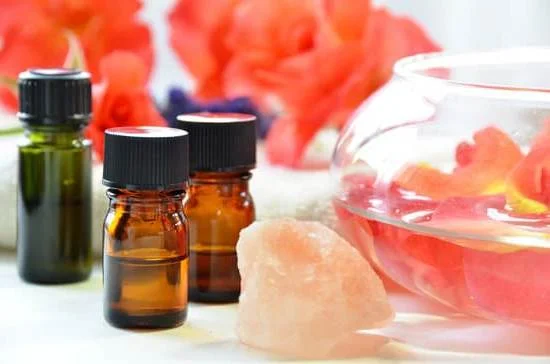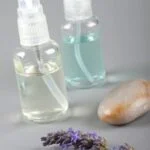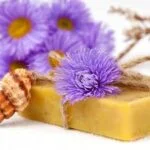An aromatherapy inhaler is a convenient and effective way to incorporate the benefits of essential oils into your daily routine. Using an inhaler allows you to directly inhale the therapeutic properties of essential oils, providing immediate relief and support for various health and wellness concerns. Whether you’re looking to reduce stress, improve focus, or alleviate congestion, an aromatherapy inhaler can be your go-to solution.
Essential oils have been used for centuries for their healing properties, and inhalation is one of the most powerful methods of utilizing their benefits. When inhaled, the tiny molecules of essential oils enter our respiratory system and are quickly absorbed into our bloodstream, triggering positive physiological and emotional responses. This makes aromatherapy inhalers an excellent tool for promoting relaxation, boosting mood, enhancing mental clarity, and even managing symptoms of common ailments.
It’s important to note that not all inhalers are created equal. There are different types available on the market, each offering distinct advantages. Personal inhalers are small and portable devices that allow you to create customized blends of essential oils for individual use. Nasal inhalers, on the other hand, provide targeted relief for nasal congestion or sinus issues. Understanding these differences will help you choose the most suitable type of aromatherapy inhaler for your specific needs.
Understanding the Different Types of Aromatherapy Inhalers
When it comes to aromatherapy inhalers, there are different types available in the market that cater to various needs and preferences. Understanding the differences between these inhalers can help you choose the most suitable one for your aromatherapy practice.
One common type of aromatherapy inhaler is the personal inhaler. These small, portable devices allow for easy and discreet inhalation of essential oils. Personal inhalers typically consist of a compact container with an absorbent wick or cotton pad that holds the essential oil. This design allows you to carry your favorite scents with you wherever you go, whether it’s during your daily commute or while traveling.
Another type of aromatherapy inhaler is the nasal inhaler. This type of inhaler is specifically designed for direct inhalation through the nose. Nasal inhalers often have a tube-shaped container with a removable cap, inside which you place a saturated wick or cotton pad soaked in essential oils. The benefit of using a nasal inhaler is that it provides targeted relief for sinus congestion or other respiratory issues by delivering the aroma directly to the nasal passages.
In choosing between personal and nasal inhalers, consider your specific needs and preferences. Personal inhalers are more versatile and convenient for general use throughout the day, while nasal inhalers are ideal for those seeking relief from respiratory discomfort.
| Type | Pros | Cons |
|---|---|---|
| Personal Inhalers | – Highly portable and discreet
| – Scent may not last as long compared to larger diffusers |
| Nasal Inhalers | – Direct and targeted relief for nasal issues
| – Less portable than personal inhalers
|
Selecting the Right Essential Oils for Your Aromatherapy Inhaler
Popular Essential Oils for Inhalers
When it comes to selecting the right essential oils for your aromatherapy inhaler, there is a wide range of options available. Certain essential oils are known for their specific benefits and effects on the mind and body. Here are some popular essential oils commonly used in inhalers and their potential benefits:
- Lavender: Known for its calming properties, lavender essential oil can help reduce stress, promote relaxation, and improve sleep quality.
- Peppermint: With its refreshing scent, peppermint essential oil is often used to boost energy, alleviate headaches, and improve mental clarity.
- Eucalyptus: Renowned for its invigorating aroma, eucalyptus essential oil can aid in clearing the respiratory system, relieving congestion, and enhancing focus.
- Lemon: The vibrant scent of lemon essential oil is believed to uplift mood, enhance concentration, and support immune function.
- Frankincense: Often associated with spiritual practices, frankincense essential oil has calming properties and may help reduce anxiety while promoting feelings of tranquility.
It is important to note that individual responses to different essential oils can vary. Experimenting with different oils and finding what works best for you may be necessary to achieve the desired effect.
Choosing Essential Oils Based on Your Wellness Goals
To select the most suitable essential oils for your aromatherapy inhaler, it is helpful to consider your wellness goals or the specific effects you wish to achieve. Here are some guidelines:
- Calming and Relaxation: If your goal is relaxation or stress relief, lavender or chamomile essential oils may be ideal choices.
- Uplifting and Energizing: For an energizing effect or to uplift mood, citrus oils such as lemon or orange can provide a refreshing burst of fragrance.
- Mental Clarity and Focus: If you are looking to enhance mental clarity or improve focus, essential oils like rosemary or peppermint can help stimulate the mind.
- Respiratory Support: To promote clear breathing and support respiratory health, eucalyptus, tea tree, or pine essential oils are commonly recommended.
Remember to consider personal preferences and any sensitivities or allergies you may have before choosing essential oils for your inhaler. Consulting with a qualified aromatherapist might also be beneficial in selecting the right essential oils for your specific needs.
Preparing Your Aromatherapy Inhaler
An important step in using an aromatherapy inhaler is to properly prepare and assemble the device. This ensures that you are able to experience the full benefits of inhalation therapy. In this section, we will guide you through the steps to prepare your aromatherapy inhaler, including cleaning and sterilizing the device, as well as inserting essential oil wicks or cotton pads.
One of the first things you should do before using a new aromatherapy inhaler is to clean and sterilize it. This is particularly important if you have purchased a reusable inhaler or if you are sharing it with others. Start by disassembling the different components of the inhaler. Wash them with warm soapy water and rinse thoroughly. Use a clean cloth or paper towel to dry them completely before reassembling.
Once your inhaler is clean, it’s time to insert essential oil wicks or cotton pads into the device. These serve as carriers for the essential oils that you will be inhaling. Some reusable personal inhalers come with absorbent wicks that can be easily replaced when needed. If not, you can cut a small piece of cotton pad that fits snugly inside the inhaler tube.
Now it’s time to choose your essential oils based on your desired effect or wellness goals. Drop a few drops of your chosen essential oil onto the wick or cotton pad, being careful not to saturate it completely. The aroma should be pleasant but not overwhelming. The number of drops will depend on the size of your inhaler and personal preference.
| Steps | Notes |
|---|---|
| Clean and sterilize the inhaler | This is especially important for reusable devices or shared inhalers. |
| Disassemble the inhaler | Make sure to separate each component before cleaning. |
| Wash with warm soapy water | Rinse thoroughly and dry completely before reassembling. |
| Insert essential oil wicks or cotton pads | Use absorbent wicks provided or cut small pieces of cotton pads to fit snugly inside the inhaler tube. |
| Add drops of essential oils | A few drops should suffice, adjust according to personal preference and inhaler size. |
Proper Inhalation Techniques for Optimal Aromatherapy Experience
Using an aromatherapy inhaler is a simple and effective way to enjoy the benefits of essential oils. However, to maximize the aromatherapy experience, it is important to use proper inhalation techniques. By following these techniques, you can ensure that you are fully utilizing the therapeutic properties of the essential oils and promoting relaxation and overall well-being.
- Deep Breathing: When using an aromatherapy inhaler, take slow and deep breaths. Inhale deeply through your nose, allowing the scent of the essential oil to fill your lungs. Hold your breath for a few seconds before exhaling slowly through your mouth. Deep breathing helps to enhance the absorption of the essential oil vapors into your respiratory system.
- Controlled Exhalation: During exhalation, focus on releasing any tension or stress you may be holding onto. This will help to enhance the relaxation response triggered by the aromatherapy inhaler. Take your time with each exhalation and let go of any negative energy or emotions.
- Duration: The ideal duration for inhaling from an aromatherapy inhaler is between 5-10 breaths per use. This duration allows enough time for the essential oil molecules to reach your olfactory system and deliver their therapeutic benefits.
- Repeat as Needed: You can use your aromatherapy inhaler throughout the day whenever you feel the need for a boost in mood or focus. Whether it’s during stressful situations, before bedtime, or simply when you want to experience a moment of calmness, inhaling from your inhaler can provide quick relief and relaxation.
By practicing these proper inhalation techniques, you can ensure that you are making the most out of your aromatherapy inhaler experience. Remember to always listen to your body and adjust as needed for your personal preferences and comfort level.
Tips for Effective Aromatherapy Inhaler Usage
One of the key aspects of harnessing the benefits of aromatherapy inhalers is knowing how to use them effectively. By following some helpful tips and techniques, you can optimize your inhalation therapy experience and enhance the benefits of essential oils. Here are some tips for effective aromatherapy inhaler usage:
- Choose the Right Time: Consider using your aromatherapy inhaler at specific times of the day to support your wellness goals. For instance, if you’re looking for a pick-me-up or energy boost, try using energizing essential oils like peppermint or citrus in the morning. On the other hand, if you’re winding down in the evening or trying to relax before bed, consider incorporating calming oils such as lavender or chamomile.
- Focus on Proper Breathing Techniques: When using an aromatherapy inhaler, it’s important to pay attention to your breathing techniques. Take slow, deep breaths through your nose while inhaling from the inhaler and hold the aroma in for a few seconds before exhaling slowly through your mouth. This controlled breathing technique allows you to fully experience and absorb the benefits of the essential oils.
- Experiment with Different Locations or Situations: While inhaling directly from an aromatherapy inhaler is effective on its own, you can amplify its effects by using it in certain locations or situations. For example, during meditation or yoga practice, take a moment to pause and inhale deeply from your inhaler to support relaxation and focus. You can also use your inhaler while taking a bath or enjoying nature for a more immersive sensory experience.
Remember that everyone’s experience with aromatherapy is unique, so feel free to experiment with different combinations of essential oils and techniques until you find what works best for you. By incorporating these tips into your daily routine, you can make the most out of your aromatherapy inhaler and enjoy its therapeutic benefits throughout the day.
Safety Precautions and Considerations
Educating Yourself on Safety Precautions
When using an aromatherapy inhaler, it is important to prioritize safety and take necessary precautions to ensure a positive and safe experience. Educating yourself about the potential risks and considerations associated with using essential oils for inhalation purposes is essential. While aromatherapy inhalers are generally safe for most individuals, there are certain situations where caution should be exercised.
Firstly, pregnant women should consult with their healthcare provider before using an aromatherapy inhaler. Some essential oils may have adverse effects during pregnancy or could stimulate contractions. Additionally, individuals with pre-existing medical conditions such as asthma or allergies should exercise caution when using aromatherapy inhalers. Certain fragrances or essential oils can trigger allergies or irritate the airways, which can be potentially harmful for those with respiratory conditions.
Understanding Contraindications and Potential Risks
It is crucial to be aware of contraindications that may affect your ability to safely use an aromatherapy inhaler. For example, some essential oils can interact with medications and interfere with their efficacy. Therefore, it is important to consult a healthcare professional if you are taking any medications before incorporating an inhaler into your wellness routine.
Furthermore, certain essential oils may cause photosensitivity or skin sensitization when applied topically. While this risk does not apply directly to inhalation therapy, it is important to handle the oils properly and avoid contact with the skin unless specifically directed by a certified aromatherapist.
Using Aromatherapy Inhalers Responsibly
When using your aromatherapy inhaler, make sure to follow all instructions provided by the manufacturer. It is also advisable to start with shorter duration of use initially and gradually increase if no adverse reactions occur.
Additionally, always store your inhaler in a cool and dry place away from direct sunlight. Exposure to heat and sunlight can degrade the quality of essential oils and affect their potency. Proper storage will ensure that your inhaler remains effective for as long as possible.
By understanding and prioritizing safety precautions, you can confidently incorporate an aromatherapy inhaler into your wellness routine while minimizing potential risks or adverse reactions. Remember to always consult with a healthcare professional or certified aromatherapist if you have any concerns or questions about using an inhaler with essential oils.
Maintenance and Care of Your Aromatherapy Inhaler
Maintaining and caring for your aromatherapy inhaler is essential to ensure its longevity and optimal performance. By following proper maintenance practices, you can continue to harness the benefits of inhalation therapy for an extended period of time.
Cleaning your aromatherapy inhaler regularly is crucial to prevent the buildup of bacteria, germs, and residue from essential oils. To clean your inhaler, disassemble it completely and wash each component with warm soapy water. Use a gentle brush or toothpick to remove any stubborn residue. Rinse thoroughly and allow the parts to air dry before reassembling. It is important to note that alcohol should not be used on plastic components as it may cause them to degrade or become damaged.
In addition to regular cleaning, it is important to store your aromatherapy inhaler properly. Keep it in a cool, dry place away from direct sunlight and extreme temperatures. Utilize a small carrying case or pouch to protect your inhaler when not in use, preventing any accidental damage or exposure to contaminants.
For optimal performance, replace the essential oil wicks or cotton pads in your inhaler regularly. Over time, these materials can become saturated and lose their potency. Replace the wick or pad every 1-2 months, depending on frequency of use and personal preference. Be sure to label each wick or pad with the specific essential oil(s) used so you can easily track which oils have been utilized.
By incorporating these maintenance and care tips into your routine, you can enjoy long-lasting use of your aromatherapy inhaler while maximizing its benefits for overall wellness. Taking good care of your inhaler ensures a consistent and effective experience every time you inhale the soothing scents of essential oils.
Conclusion
In conclusion, using an aromatherapy inhaler can be a powerful tool for enhancing your overall well-being. Throughout this article, we have explored the different types of inhalers available and the benefits they offer. We have also discussed how to select the right essential oils for your inhaler, as well as the proper techniques for optimal inhalation. Additionally, we have provided tips on maximizing the benefits of inhalation therapy and maintaining your inhaler for long-term use.
By incorporating an aromatherapy inhaler into your daily routine, you have the opportunity to experience a wide range of benefits. Whether you are seeking relaxation and stress relief, improved focus and concentration, or relief from headaches or congestion, there is an essential oil that can support your wellness goals. The wonderful thing about using an inhaler is that it allows you to harness these benefits quickly and conveniently wherever you are.
Remember, when using your aromatherapy inhaler, it is important to practice deep inhalation and controlled exhalation to fully immerse yourself in the aromatic experience. You may find that using your inhaler in specific times of the day or in certain situations enhances its effectiveness even more. However, it is essential to be mindful of safety precautions and contraindications related to using aromatherapy inhalers.
Incorporating an aromatherapy inhaler into your wellness routine can truly transform how you approach self-care. By taking advantage of its ease of use and effectiveness, you can create a holistic approach to well-being that uplifts both mind and body. So go ahead and harness the benefits of aromatherapy with your very own inhaler – breathe in the power of essential oils and embrace a healthier, happier you.
Frequently Asked Questions
What does an aromatherapy inhaler do?
An aromatherapy inhaler is a handheld device that allows individuals to inhale the aromatic compounds of essential oils. It typically consists of a tube containing a cotton wick infused with the desired essential oil or blend.
When used, the inhaler helps deliver the therapeutic benefits of the oil directly to the olfactory system, which connects to the brain’s limbic system responsible for emotions and memory. By inhaling these aromatic molecules, aromatherapy inhalers aim to support relaxation, uplift mood, promote focus, or provide relief from certain symptoms such as congestion or headaches.
Is it safe to use an aromatherapy inhaler?
Generally, using an aromatherapy inhaler is considered safe when used properly and in moderation. Essential oils can be potent and may cause adverse reactions if used incorrectly or excessively. It’s important to choose high-quality essential oils from reputable sources and ensure they are properly diluted before using them in inhalers.
Additionally, individuals with asthma, allergies, sensitivities, or specific medical conditions should consult with healthcare professionals before incorporating aromatherapy inhalers into their routines. Pregnant women should also exercise caution and seek guidance due to specific essential oils being contraindicated during pregnancy.
How often can you use an essential oil inhaler?
The frequency of use for an essential oil inhaler depends on individual preferences and needs. There is no one-size-fits-all answer since everyone reacts differently to essential oils and has varied needs for their well-being. Some people may find benefit from using an inhaler multiple times throughout the day, while others may prefer occasional use when needed.
It’s crucial to listen to your body’s response and adjust usage accordingly. However, it’s generally recommended not to rely solely on continuous long-term use without breaks, as this could potentially lead to desensitization or reduced efficacy over time. As with any wellness product, moderation and personal awareness are key factors when determining how often you can use an essential oil inhaler effectively and safely.

Are you looking for a natural way to improve your health and wellbeing?
If so, aromatherapy may be the answer for you.






